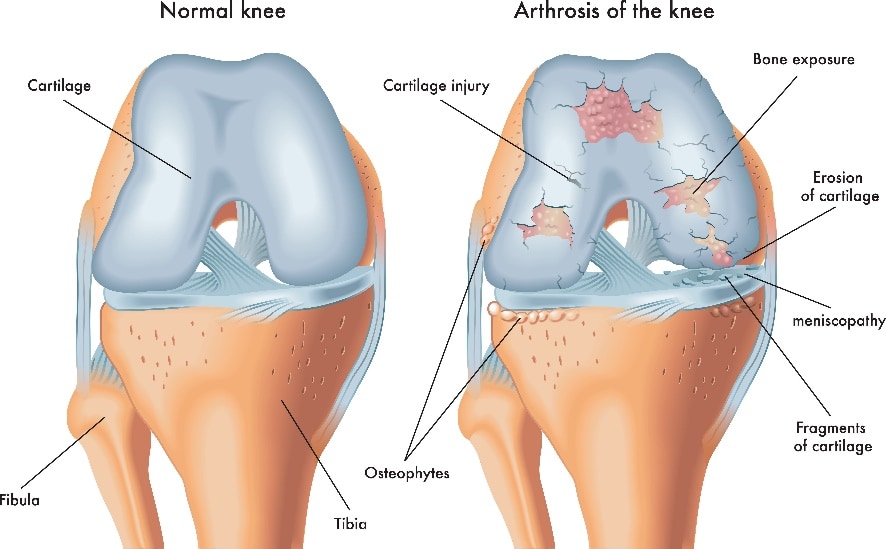Knee osteoarthritis (OA) is a prevalent condition that affects millions of people worldwide, causing pain, stiffness, and reduced mobility. While there is no known cure for knee OA, various treatment options aim to manage symptoms and improve quality of life. One emerging technique gaining attention is MLS (Multiwave Locked System) laser therapy. In this blog post, we will delve into the use of MLS laser therapy for knee osteoarthritis and explore its potential benefits.
Understanding MLS Laser Therapy

The Benefits of MLS Laser Therapy for Knee Osteoarthritis
- Pain Reduction: One of the primary advantages of MLS laser therapy is its ability to alleviate pain associated with knee osteoarthritis. Laser energy helps to reduce inflammation, stimulate nerve cells, and release endorphins, which are natural painkillers produced by the body. As a result, patients often experience significant pain relief, allowing them to engage in daily activities with greater ease.
- Non-Invasive and Non-Pharmacological: MLS laser therapy offers a non-invasive alternative to traditional treatments for knee osteoarthritis. Unlike surgical interventions, MLS laser therapy does not require incisions, reducing the risk of complications and enabling a faster recovery. Additionally, it is a drug-free treatment option, making it suitable for individuals who prefer to avoid or minimize medication usage.
- Minimal Side Effects: MLS laser therapy is generally well-tolerated and has minimal side effects. Patients may experience mild warmth or tingling sensations during the treatment session, but these typically subside quickly. Moreover, unlike medications commonly used for pain management, MLS laser therapy does not pose the risk of adverse reactions or drug interactions.
- Complementary Approach: MLS laser therapy can be used alongside other treatments for knee osteoarthritis. It can complement physical therapy, exercise programs, and lifestyle modifications, enhancing the overall effectiveness of the treatment plan. This combined approach addresses multiple aspects of the condition, providing comprehensive care for individuals with knee osteoarthritis.
The Treatment
For knee osteoarthritis, the number of treatments can range from 6-12 sessions. Each session lasts 10-20 minutes and is performed 2-3 times per week.
Conclusion
MLS laser therapy is an innovative treatment modality offering promising results for individuals with knee osteoarthritis. By reducing pain, promoting healing, and providing a non-invasive approach, MLS laser therapy has the potential to significantly improve the quality of life for those suffering from this debilitating condition.
References:
Ahmad M.A., MS AH, Yusof A. Effects of low-level and high-intensity laser therapy as adjunctive to rehabilitation exercise on pain, stiffness and function in knee osteoarthritis: a systematic review and meta-analysis. Physiotherapy. 2022;114:85–95.
https://pubmed.ncbi.nlm.nih.gov/34654554/
Stausholm M.B., Naterstad I.F., Joensen J., Lopes-Martins RÁ B., Sæbø H., Lund H., et al. Efficacy of low-level laser therapy on pain and disability in knee osteoarthritis: systematic review and meta-analysis of randomised placebo-controlled trials. BMJ Open. 2019;9:1–13. e031142.
https://bmjopen.bmj.com/content/bmjopen/9/10/e031142.full.pdf
MF DEO, Johnson D.S., Demchak T., Tomazoni S.S., Leal-Junior E.C. Low-intensity LASER and LED (photobiomodulation therapy) for pain control of the most common musculoskeletal conditions. Eur J Phys Rehabil Med. 2022;58:282–289.
https://www.ncbi.nlm.nih.gov/pmc/articles/PMC9980499/pdf/16-7236-EJPRM_N.pdf
Cotler H.B., Chow R.T., Hamblin M.R., Carroll J. The use of low level laser therapy (LLLT) for musculoskeletal pain. MOJ orthopedics Rheumatol. 2015;2:188–194.
https://www.ncbi.nlm.nih.gov/pmc/articles/PMC4743666/pdf/nihms716157.pdf
